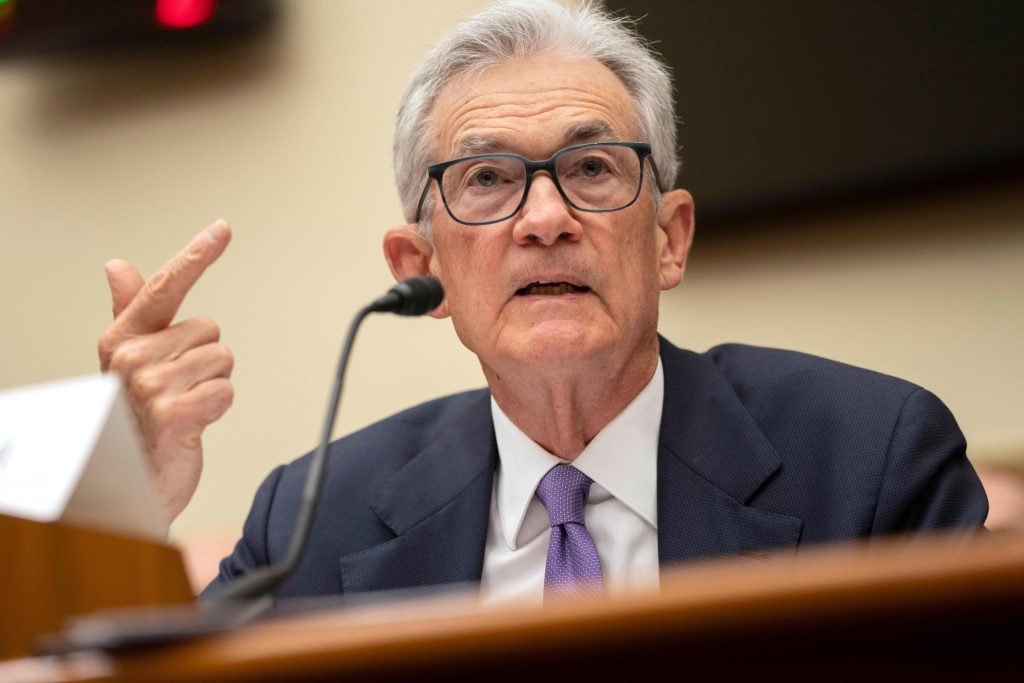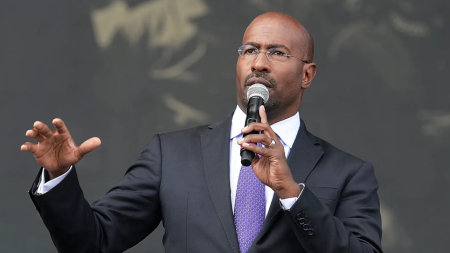By CHRISTOPHER RUGABER (AP Economics Writer)
WASHINGTON (AP) — Many people in the United States are eagerly awaiting the first cut to the Federal Reserve's benchmark interest rate this year. Prospective home buyers are hoping for lower mortgage rates. Wall Street traders are envisioning higher stock prices. Consumers are looking for relief from credit card debt at record-high interest rates.
And we can't forget President Joe Biden, whose re-election campaign would probably benefit from an economic boost resulting from lower borrowing rates.
However, Chair Jerome Powell and his fellow Fed officials are expected to take a cautious approach when they meet this week, keeping their rate unchanged for a fifth consecutive time and indicating that they still need more proof that inflation is returning sustainably to their 2% target.
The Fed's careful approach shows what's different about this potential round of rate cuts. Vincent Reinhart, chief economist at Dreyfus-Mellon and a former Fed economist, points out that the Fed typically cuts rates quickly as the economy worsens in a often unsuccessful attempt to prevent a recession.
But this time, the economy is still in good shape. The Fed is thinking about rate cuts only because inflation has steadily fallen from a high of 9.1% in June 2022. As a result, it is approaching rate cuts in the same way it usually approaches rate hikes: Slowly and systematically, while trying to figure out the economy's direction from often conflicting data.
"The Fed is leading the way, not the other way around," Reinhart said. "That's why this task is different from others."
After their last meeting in January, the central bank's policymakers had stated that they required "greater confidence" that inflation was clearly cooling toward their 2% target. Since then, the government has released two inflation reports indicating that the pace of price increases is still high.
In many aspects, the U.S. economy is still very strong. Employers are continuing to hire, unemployment remains low, the stock market is close to record highs, and inflation has dropped significantly from its peaks. However, average prices are still much higher than before the pandemic, causing dissatisfaction for many Americans, for which Republicans have tried to blame Biden.
Excluding the unstable costs of food and energy, the so-called "core" prices increased monthly by 0.4% in both January and February, a pace much higher than the Fed's inflation target. Compared to a year earlier, core prices rose by 3.8% in February. Core prices are considered a good indicator of where inflation is likely heading.
In February, a measure of housing costs slowed, which is a significant trend as housing is one of the government's "stickiest" price categories. On the other hand, more unpredictable categories like clothing, used cars, and airline tickets drove up prices in February, but they might reverse course in the following months.
"Neither of those two data prints made you feel significantly more optimistic about" inflation reaching the Fed's target soon, said Seth Carpenter, chief global economist at Morgan Stanley and a former Fed economist. "But it's definitely not enough to change your view on the fundamental direction of inflation."
Several Fed officials have recently stated that they believe inflation will continue to decrease this year, although the decline will probably be slower than in 2023.
The Fed has also factored in an expectation that price increases will only gradually ease this year. In December, it predicted that core inflation would reach 2.4% by the end of 2024. That’s close to its current 2.8%, according to the Fed’s preferred measure.
On Wednesday, the Fed’s policymakers will update their quarterly economic projections, which are expected to reiterate their December forecast for three rate cuts by the end of 2024. However, if just two of the 19 Fed officials revise their forecast to project one less rate cut, the central bank’s overall projection would shift to just two rate cuts for 2024. Some economists expect this to occur, as inflation has remained persistent at the beginning of this year.
The Fed’s benchmark rate is currently around 5.4%, the highest level in 23 years, following a series of 11 rate hikes aimed at curbing the worst inflation in four decades. However, these hikes have also significantly increased borrowing costs for consumers and businesses.
Like the Fed, other major central banks are maintaining high rates to ensure control over consumer price spikes. In Europe, there is pressure to lower borrowing costs as inflation drops and economic growth has stalled, in contrast to the situation in the United States. The European Central Bank’s leader suggested this month that a possible rate cut wouldn’t come until June, while the Bank of England is not expected to indicate any imminent cut at its meeting Thursday.
Most economists anticipate the Fed to carry out its first rate cut at its June meeting, which means that in May, the Fed would signal such a move. By June, policymakers will have received three more inflation readings and three more jobs reports.
Sarah House, senior economist at Wells Fargo, stated that this timetable allows ample time for inflation to resume its downward trend. A rate reduction would likely result in lower rates for mortgages, auto loans, credit cards, and many business loans over time.
“They certainly need to see something better than the past couple of months, but they can get it,” she said.









